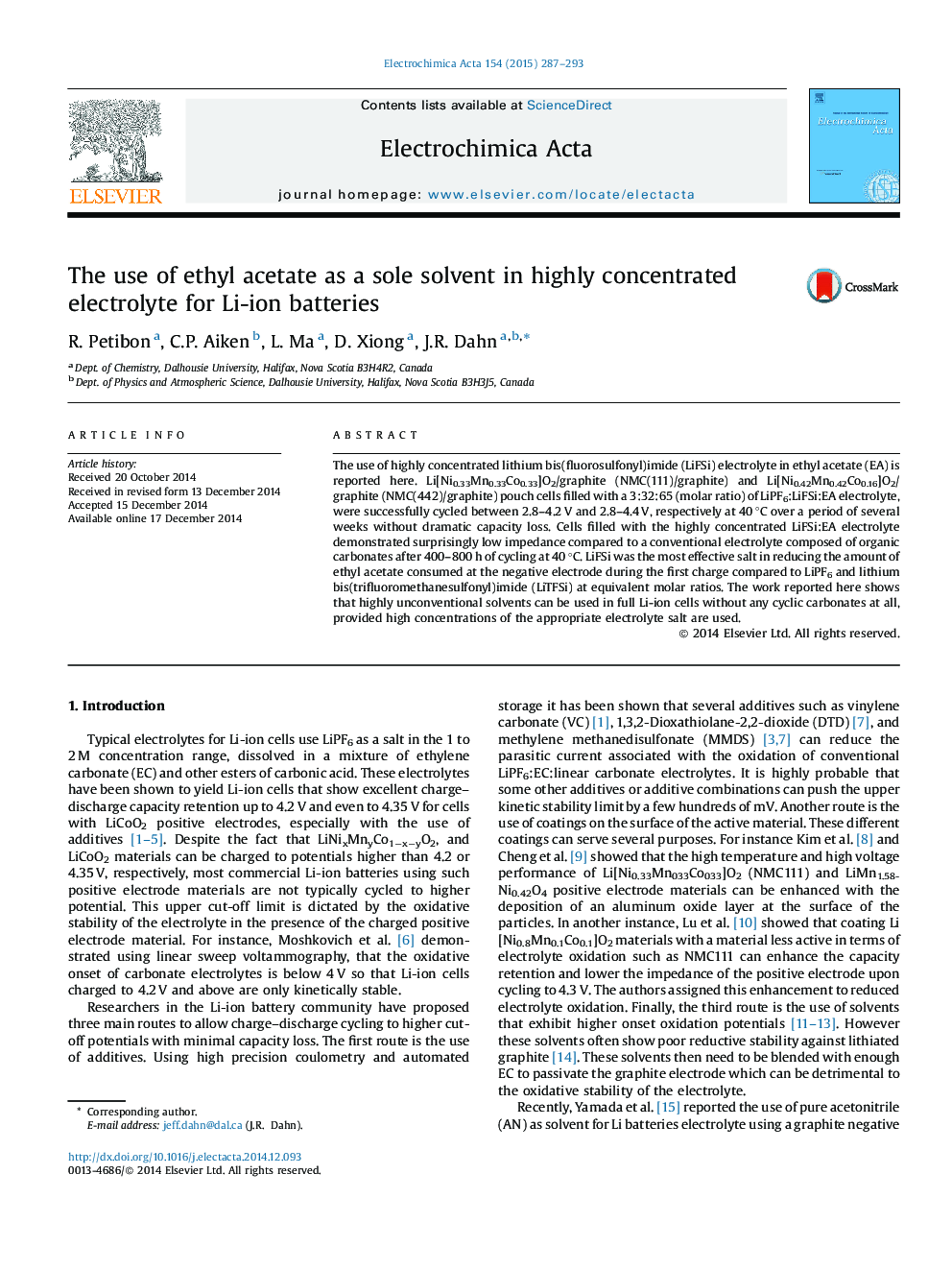| Article ID | Journal | Published Year | Pages | File Type |
|---|---|---|---|---|
| 184694 | Electrochimica Acta | 2015 | 7 Pages |
The use of highly concentrated lithium bis(fluorosulfonyl)imide (LiFSi) electrolyte in ethyl acetate (EA) is reported here. Li[Ni0.33Mn0.33Co0.33]O2/graphite (NMC(111)/graphite) and Li[Ni0.42Mn0.42Co0.16]O2/graphite (NMC(442)/graphite) pouch cells filled with a 3:32:65 (molar ratio) of LiPF6:LiFSi:EA electrolyte, were successfully cycled between 2.8–4.2 V and 2.8–4.4 V, respectively at 40 °C over a period of several weeks without dramatic capacity loss. Cells filled with the highly concentrated LiFSi:EA electrolyte demonstrated surprisingly low impedance compared to a conventional electrolyte composed of organic carbonates after 400–800 h of cycling at 40 °C. LiFSi was the most effective salt in reducing the amount of ethyl acetate consumed at the negative electrode during the first charge compared to LiPF6 and lithium bis(trifluoromethanesulfonyl)imide (LiTFSi) at equivalent molar ratios. The work reported here shows that highly unconventional solvents can be used in full Li-ion cells without any cyclic carbonates at all, provided high concentrations of the appropriate electrolyte salt are used.
